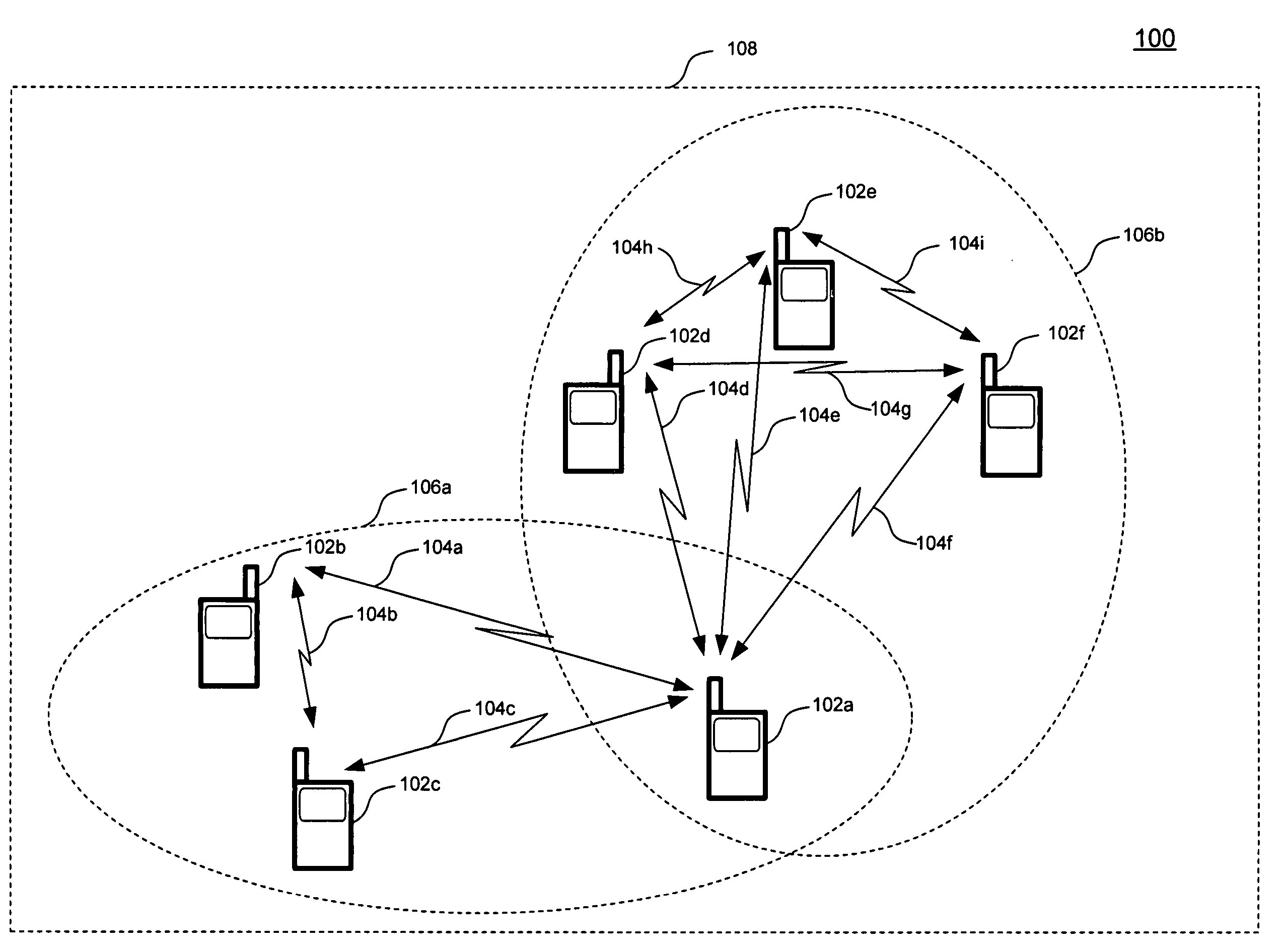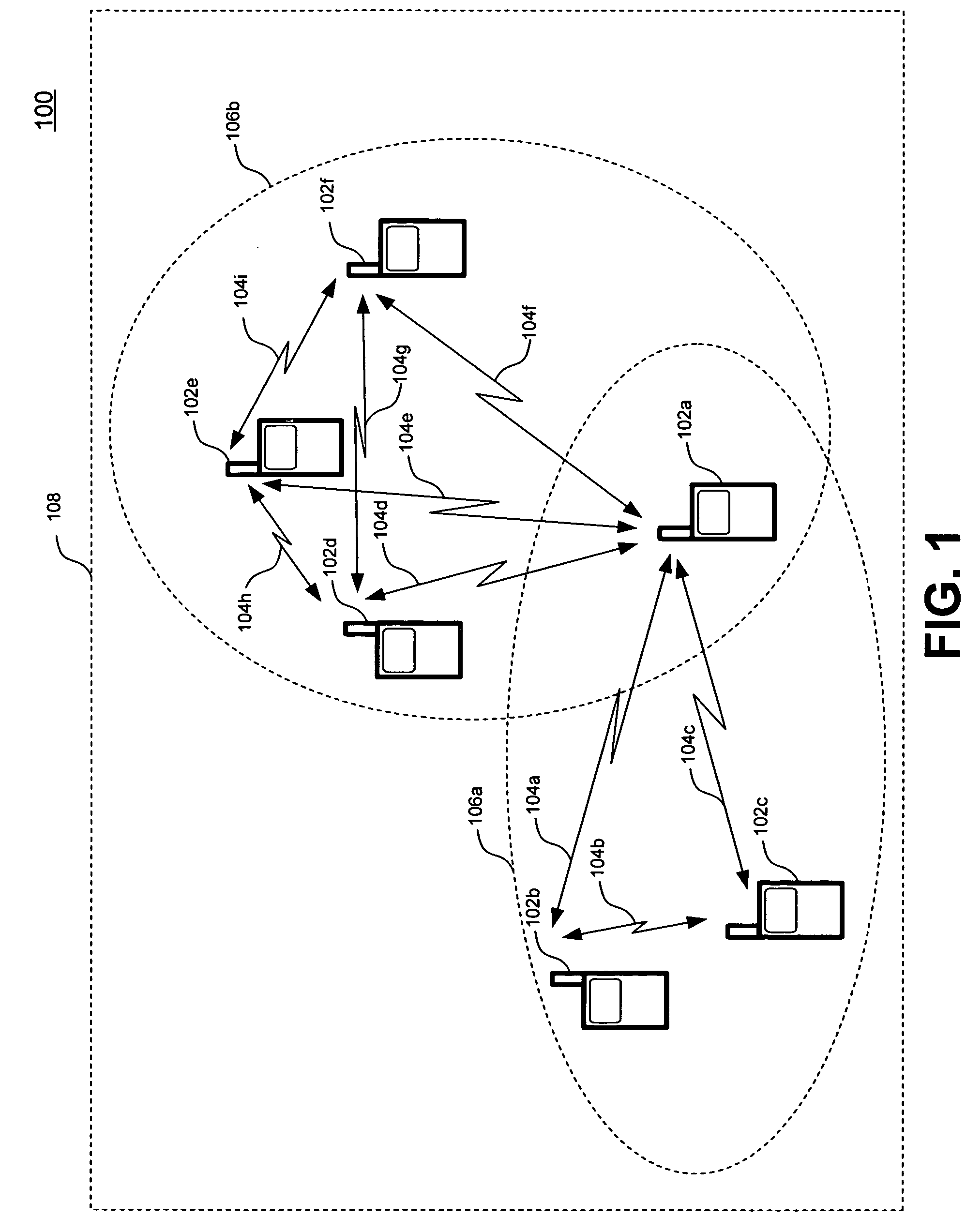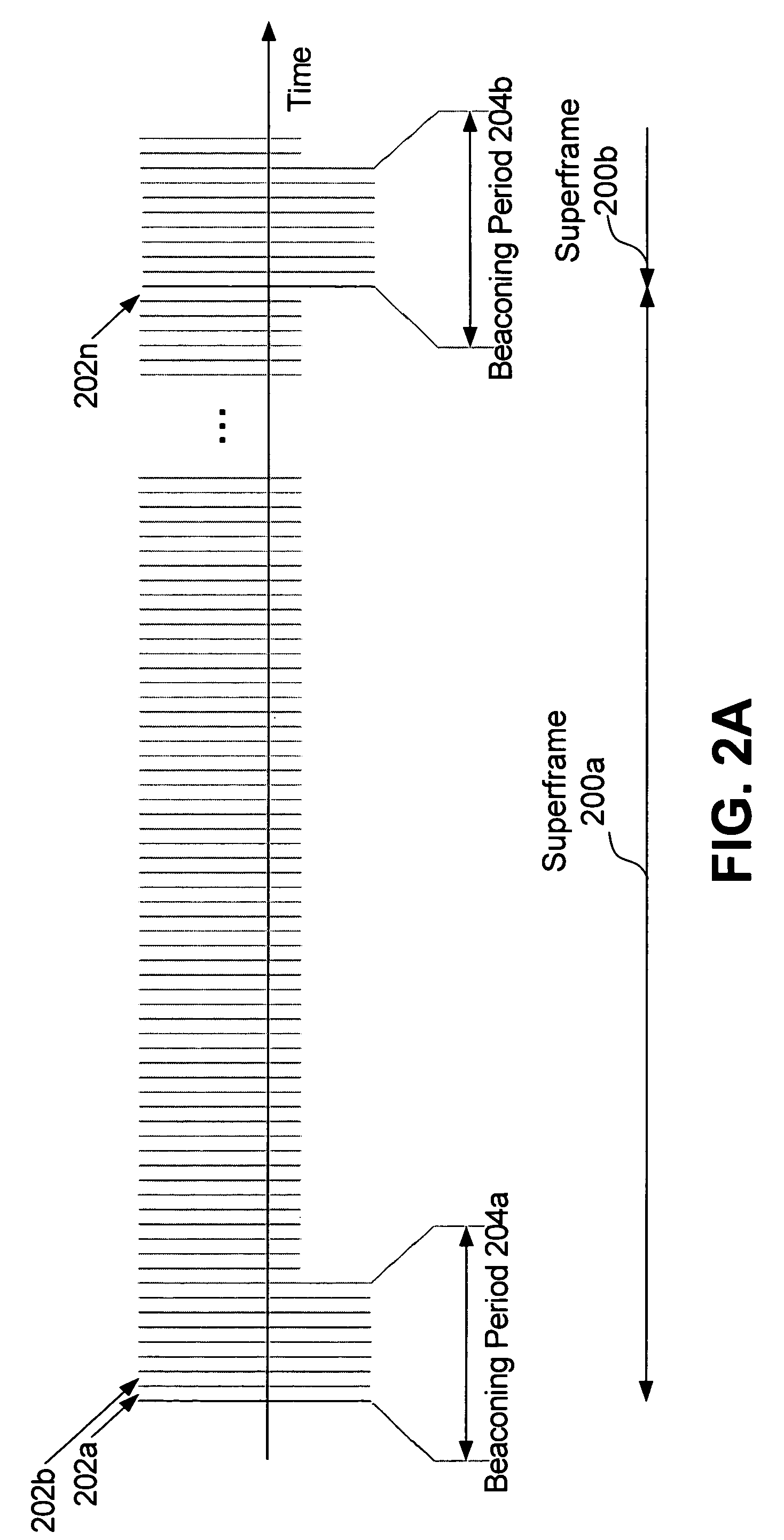Adaptive beacon period in a distributed network
a distributed network and beacon period technology, applied in the field of wireless communications, can solve the problems of inflexible number of beacon slots, unnecessary power consumption of two devices, and insufficient beacon slots, so as to reduce power consumption of communications devices and efficiently utilize communications resources.
- Summary
- Abstract
- Description
- Claims
- Application Information
AI Technical Summary
Benefits of technology
Problems solved by technology
Method used
Image
Examples
Embodiment Construction
I. Operational Environment
[0027] Before describing the invention in detail, it is helpful to first describe an environment in which the present invention may be used. Accordingly, FIG. 1 is a diagram of an exemplary operational environment in which the present invention may be employed. In this environment, a plurality of wireless communications devices (DEVs) 102 may exchange information with each other across a wireless personal area network (WPAN) 100. This exchange of information may occur through various communications paths or “hops”104 that exist between DEVs 102.
[0028] Network 100 includes a plurality of beaconing groups 106. Each beaconing group 106 includes a set of DEVs 102 that are within radio range of each other during a beaconing period. For instance, a beaconing group 106a includes DEVs 102a, 102b, and 102c. Also, a beaconing group 106b includes DEVs 102a, 102d, 102e, and 102f. Accordingly, DEV 102a belongs to both beaconing groups 106a and 106b.
[0029] The environm...
PUM
 Login to View More
Login to View More Abstract
Description
Claims
Application Information
 Login to View More
Login to View More - R&D
- Intellectual Property
- Life Sciences
- Materials
- Tech Scout
- Unparalleled Data Quality
- Higher Quality Content
- 60% Fewer Hallucinations
Browse by: Latest US Patents, China's latest patents, Technical Efficacy Thesaurus, Application Domain, Technology Topic, Popular Technical Reports.
© 2025 PatSnap. All rights reserved.Legal|Privacy policy|Modern Slavery Act Transparency Statement|Sitemap|About US| Contact US: help@patsnap.com



